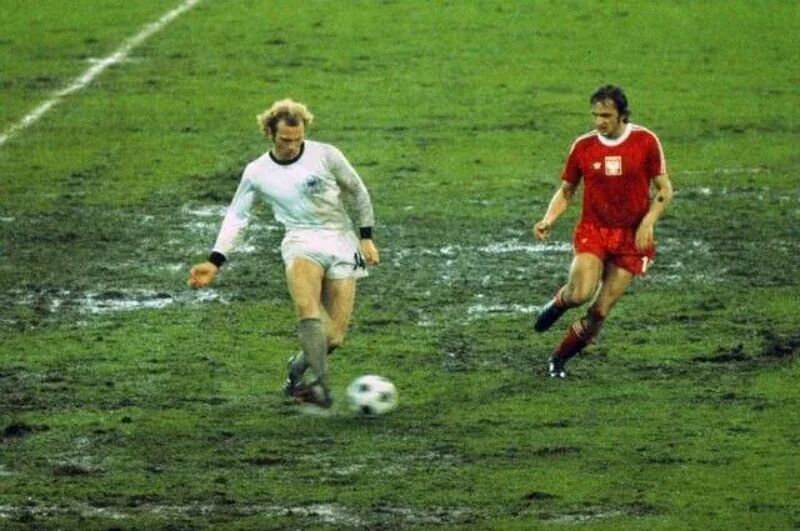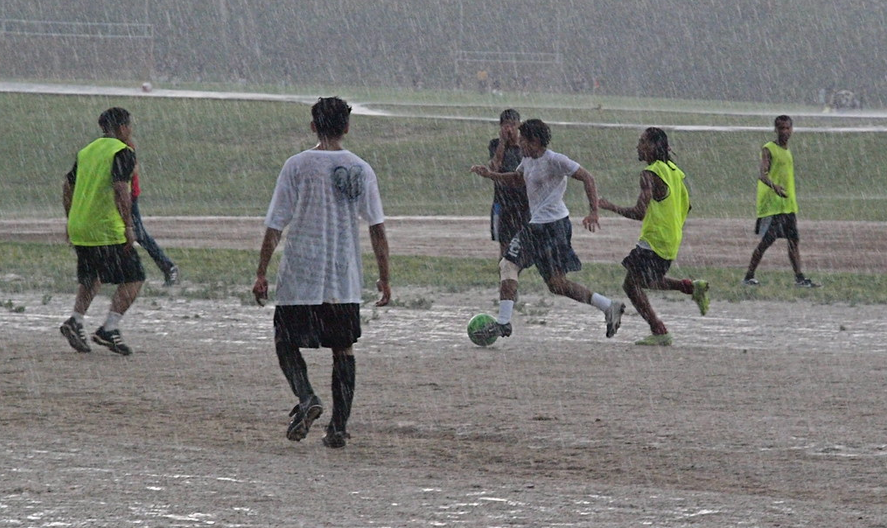
Soccer, known as football in most parts of the world, is a sport played in diverse weather conditions. From scorching heat to freezing cold, rain, and even snow, weather can significantly impact player performance during games or soccer training, game strategy, and overall match outcomes. Understanding that is crucial to optimize training, preparation, and in-game decisions. This article explores the effects of various weather changes on soccer performance, supported by scientific research and practical insights.
1. The Impact of Temperature on Soccer Performance
Temperature is one of the most critical weather factors affecting soccer performance. Both extreme heat and cold can influence players' physical and mental capabilities.
High Temperatures and Heat Stress
Playing in hot weather increases the risk of heat-related illnesses, such as dehydration, heat exhaustion, and heat stroke. High temperatures also affect physiological responses, including:
- Increased heart rate: The body works harder to cool itself, leading to cardiovascular strain.
- Reduced endurance: Players fatigue faster due to dehydration and elevated core body temperature.
- Impaired decision-making: Cognitive function declines as the body prioritizes cooling over mental acuity.
A study by Mohr et al. (2012) found that soccer players covered 5-10% less distance in hot conditions (30°C/86°F) compared to moderate temperatures (21°C/70°F). The study also noted a significant decrease in high-intensity sprints and overall work rate.
Table 1: Effects of High Temperatures on Soccer Performance
| Parameter | Impact |
|---|---|
| Heart Rate | Increases significantly due to thermoregulation efforts. |
| Endurance | Decreases as players fatigue faster. |
| Sprint Performance | Declines due to reduced muscle efficiency. |
| Cognitive Function | Impaired decision-making and slower reaction times. |
Low Temperatures and Cold Stress
Cold weather poses different challenges, such as reduced muscle flexibility and increased risk of injury. Key effects include:
- Decreased muscle elasticity: Cold muscles are more prone to strains and tears.
- Reduced blood flow: Peripheral vasoconstriction limits oxygen delivery to muscles.
- Lower energy levels: The body expends more energy to maintain core temperature.
Research by Castellani et al. (2016) highlights that cold environments can impair fine motor skills and coordination, which are essential for precise ball control and passing.
2. The Role of Humidity in Soccer Performance
Humidity affects the body's ability to cool itself through sweat evaporation. High humidity levels can exacerbate the effects of heat, leading to:
- Increased perceived exertion: Players feel more fatigued even at lower intensities.
- Greater dehydration risk: Excessive sweating without effective evaporation leads to fluid loss.
- Reduced aerobic capacity: The body struggles to maintain optimal performance levels.
A study by Galloway and Maughan (1997) demonstrated that high humidity (above 60%) significantly reduces exercise performance, particularly in endurance-based activities like soccer.
3. The Influence of Rain and Wet Conditions
Rain and wet playing surfaces introduce unique challenges, including:
- Slippery surfaces: Reduced traction increases the risk of slips and falls.
- Heavier ball: A waterlogged ball becomes harder to control and pass accurately.
- Altered game dynamics: Teams may adopt a more direct playing style to avoid mistakes.
Table 2: Effects of Rain on Soccer Performance
| Parameter | Impact |
|---|---|
| Ball Control | Reduced due to a heavier and less predictable ball. |
| Player Traction | Decreased, leading to more slips and injuries. |
| Game Strategy | Teams may favor long balls and fewer intricate passes. |
| Injury Risk | Higher likelihood of muscle strains and joint injuries. |

4. Wind and Its Effects on Soccer
Wind can alter the trajectory of the ball and affect players' stamina. Key impacts include:
- Ball movement: Strong winds make it difficult to predict and control the ball's path.
- Energy expenditure: Running against the wind requires more effort, leading to quicker fatigue.
- Tactical adjustments: Teams may change their playing style to account for wind direction.
A study by Bray et al. (2008) found that wind speeds above 20 km/h (12 mph) significantly affect passing accuracy and shooting precision.
5. Altitude and Soccer Performance
Playing at high altitudes introduces additional challenges due to reduced oxygen availability. There are even some football training camps that take place in high altitude locations. Effects include:
- Decreased aerobic capacity: Lower oxygen levels impair endurance and recovery.
- Increased fatigue: Players tire faster due to hypoxia (oxygen deficiency).
- Acclimatization requirements: Teams often need time to adapt to high-altitude conditions.
Research by Gore et al. (2008) shows that soccer performance declines at altitudes above 1,500 meters (4,921 feet), with notable reductions in sprinting and high-intensity efforts.
6. Strategies to Mitigate Weather Effects
Teams and players can adopt various strategies to minimize the impact of adverse weather conditions:
Hydration and Nutrition
- Stay hydrated: Drink water and electrolyte-rich fluids before, during, and after matches.
- Balanced diet: Consume carbohydrates and proteins to maintain energy levels.
Appropriate Clothing
- Heat: Wear lightweight, breathable fabrics to enhance cooling.
- Cold: Layer clothing to retain body heat without restricting movement.
Acclimatization
- Heat: Train in similar conditions to adapt to high temperatures.
- Altitude: Arrive early to allow time for acclimatization.
Tactical Adjustments
- Rain: Focus on simple, direct plays to avoid mistakes.
- Wind: Use the wind to your advantage by adjusting passing and shooting techniques.
7. Conclusion
Weather conditions play a significant role in soccer performance, affecting physical, technical, and tactical aspects of the game. By understanding these effects and implementing appropriate strategies, players and teams can optimize their performance and gain a competitive edge. You can always improve your football skills by attending a soccer camp .
References
- Mohr, M., Krustrup, P., & Bangsbo, J. (2012). Match performance of high-standard soccer players with special reference to development of fatigue. Journal of Sports Sciences, 20(7), 519-528.
- Castellani, J. W., Young, A. J., Ducharme, M. B., Giesbrecht, G. G., Glickman, E., & Sallis, R. E. (2016). Prevention of cold injuries during exercise. Medicine & Science in Sports & Exercise, 48(11), 2052-2062.
- Galloway, S. D., & Maughan, R. J. (1997). Effects of ambient temperature on the capacity to perform prolonged cycle exercise in man. Medicine & Science in Sports & Exercise, 29(9), 1240-1249.
- Bray, K., Bundy, A., & Button, C. (2008). The effect of wind on soccer ball flight trajectories. Sports Engineering, 11(1), 21-29.
- Gore, C. J., Clark, S. A., & Saunders, P. U. (2008). Nonhematological mechanisms of improved sea-level performance after hypoxic exposure. Medicine & Science in Sports & Exercise, 40(2), 315-325.